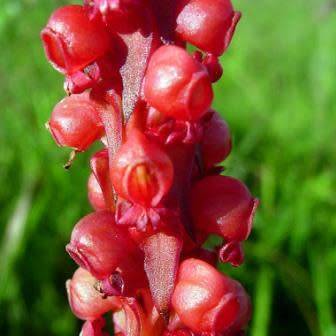









10+ Satyrium coriophoroides Seeds - Perennial African Orchid - Combined Global Ship Rates
Check my rate
| Main centres: | 1-3 business days |
| Regional areas: | 3-4 business days |
| Remote areas: | 3-5 business days |










| Main centres: | 1-3 business days |
| Regional areas: | 3-4 business days |
| Remote areas: | 3-5 business days |

Satyrium coriophoroides Seeds
African Ground Orchid

Satyrium is widespread in temperate and montane Africa, and two species are to be found in Asia (India, Sri Lanka, Burma). The genus comprises about 90 species of orchids, of which 37 are found in South Africa. With their small non-resupinate flowers (lip facing up) Satyrium species do not really look 'orchid-like'. The African species of the genus grow in fynbos, grassland and miombo woodland, and can sometimes be found in extensive and dense colonies of thousands of individuals, particularly in the year after a veld fire. Most species are pollinated by moths which are attracted by the evening-scented flowers, but pollination by carrion flies and bees also occurs in the genus. Carrion fly-pollinated Satyrium flowers emit an unpleasant carrion-like odour. Flies, apparently hoping to find a dead animal to lay their eggs in, are attracted by these flowers and pollinate them. An exciting find was the recent discovery that three South African Satyrium species are pollinated by sunbirds. Flowering of all species occurs in spring or summer. Satyrium species have undivided globular to elongate root tubers. The erect stems are 3 to 80 cm tall and have cauline leaves (all along their stem) or basal leaves, and in the latter case mostly adpressed (pressed) to the ground. They are normally glabrous (hairless) throughout. In shape the leaves vary from ovate (round) to lanceolate (lance-shaped). Some species have sterile stems that have only foliage leaves, while their inflorescences (flowers) are borne on separate stems which lack foliage. The unbranched inflorescences are terminal and have flowers that range in colour from red, pink, white, orange, yellow and green to brown. Frequently they are speckled or dotted with darker colours. The sepals and petals are simple organs though sometimes marginally fringed, and are basally fused to each other to a greater or lesser degree (very extensively in S. pumilum). The lip is hood-like and has a terminal tip called 'flap'. It has two spurs, one on each side of the ovary. Sometimes these spurs are reduced to shallow sacs, and very rarely they are missing altogether. The structure of the column in the centre of the flower is remarkable as it has a long stalk at the base in contrast to all other related orchids. As in many other terrestrial orchids the entire above-ground part of the plant dies at the end of the growing season and the plant becomes dormant. A number of suspected hybrids are known in the genus Satyrium. Satyrium coriophoroides is a terrestrial herbaceous orchid growing 4080 cm high, from an ellipsoid tuber up to 5.5 cm long. It is found growing naturally in Cameroon, the Democratic Republic of Congo (Zaire), Ethiopia and Kenya in grassland, and at the edges of woodlands. Growing orchids from seed is a fairly specialized undertaking and it requires a bit of understanding of tissue culture techniques. If you have never grown orchids from seed we recommend that before attempting this you should first contact your local Orchid Society, or purchase a book on the subject, or both!
